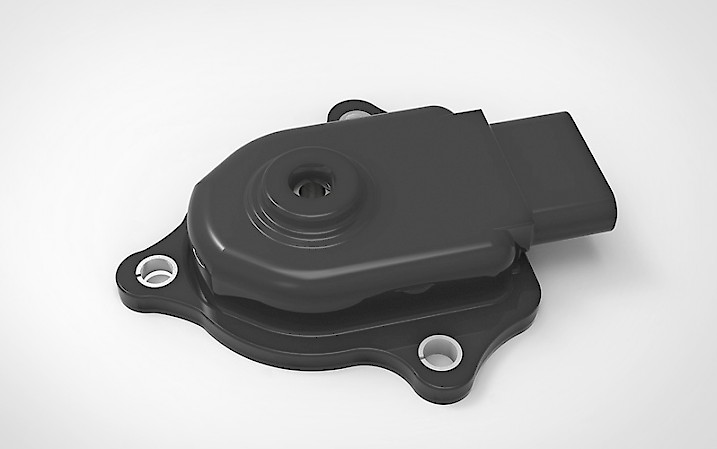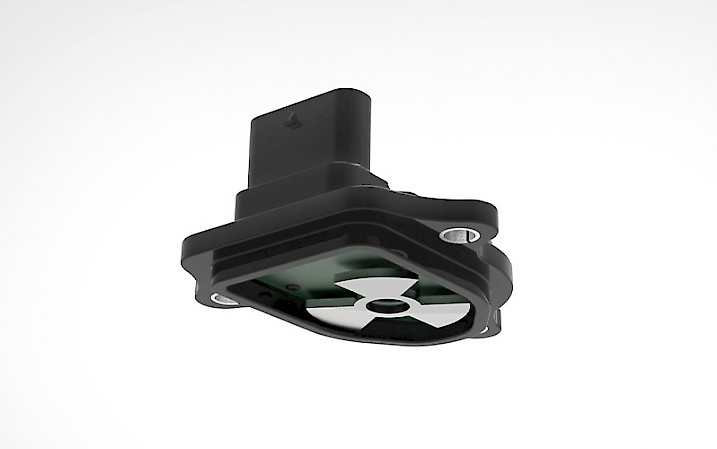
Sensors are now a vital part of any vehicle, playing a crucial role in helping manufacturers introduce to the market models that are safer, more fuel-efficient, and more comfortable to drive. There isn't a new car that isn't equipped with a large number of sensors, whether they are related to proper and safe operation of the engine, comfort inside the cabin, or intended for environmental detection, in relation to the new requirements arising from assisted or autonomous driving functionalities.
For FAIST’s Business Unit Control Systems, the world of sensors is nothing new. Almost twenty years ago, FAIST CS was developing, validating, and putting in production its own contactless position sensor (Hall effect), designed to detect the position of pneumatic actuators for turbochargers, enabling actuator control in feedback and thus supporting customers looking for solutions to reduce fuel consumption and emissions from internal combustion engines.
This sensor, which entered production in 2012, is still produced today and assembled on actuators produced in FAIST Romania.
Today, the Research and Development department of FAIST Control Systems continues to focus on sensor technology required by new progresses related to electrification and ongoing technological advancements in the sector; within this scope is the development project of a Resolver, namely a sensor for speed of rotating shafts, which finds application in measuring especially the rotation speed of electric motor rotors, whether they are traction motors or dedicated to various uses, such as controlling e-compressors for fuel cells, power steering, or electrically assisted turbochargers to improve efficiency and durability.
Precisely measuring the rotation speed of an electric motor is important because it optimizes the efficiency of the motor itself by synchronizing the phase currents of the stator with the rotor position, ensuring better control of the produced torque.
In particular, when we think about traction motors, regardless of the vehicle architecture, whether it is HEV or BEV, the types of traction motors used are basically two, namely Induction Motors or Permanent Magnet Synchronous Motors, and although the control strategies of the two types are very different from each other, fundamental in both cases is the precise feedback regarding the position and speed of the rotor, allowing the management of commutation in the motor, and thus achieving precise control of produced torque and output speed.

Standard design of FAIST CS’ inductive resolver
For several months, engineers Elena Lucchi and Luigi Vittoria from the BU’s Center of Excellence have been collaborating with application engineer Francesco Martinelli on the development of a versatile and high-performance resolver, which has led to the realization of the first prototypes, quickly followed by the first sampling series.
The product is specifically an inductive resolver for high-speed rotating shafts: it is a sensor that measures the rotation speed of an electric motor using the principle of eddy currents induced in a metal object by a variable magnetic field, specifically developed to measure up to 48,000 rpm. Currently, resolvers used in automotive applications can operate based on different principles, but those specifically used for high-speed rotating shafts are mostly based on "variable reluctance" (VR resolver): they consist of a ferromagnetic rotor and a stator with different secondary windings. An excitation winding generates an electromagnetic flux coupled to the ferromagnetic core of the rotor, which induces a potential difference in the secondary windings, attributable to the position of the rotor itself.
This type of solution, although extremely robust, precise, and reliable, has the disadvantage of being costly, high in weight and size, and not ideal, due to its inertia, for measuring high-speed rotation. Furthermore, its signal needs to be processed by the receiving device (usually the motor driver) with non-trivial post-processing.
Last but not least, it should be mentioned that the control of electric motors must aim, in addition to performance improvement and durability, also at maintaining Functional Safety according to ISO 26262, which often requires the resolver to be certified in Safety Integrity Level D (ASIL D). This requirement, for variable reluctance resolvers, implies that the excitation and secondary circuits are duplicated to ensure operation through redundancy, but this also implies a doubling of weight, size, and an increase in cost.
FAIST’s inductive resolver essentially consists of a printed circuit board and a metallic target fixed to the motor's rotation axis, much more compact and lighter compared to those based on variable reluctance. On the board, a transmission coil, which generates the magnetic field, and three receiving coils, which collect the signal altered by eddy currents, are realized as conductive tracks. An integrated circuit produces the excitation current of the coil and processes the signals from the transmission coils, outputting a signal from which the motor rotation speed is derived. The electrical signal post-processing is performed on a chip mounted on the same board.
These two fundamental elements are integrated into a plastic support, which can be easily fitted to the motor design, according to the specific needs of the customer who can freely define the positions of fixing points and the connector. The standard bill of materials can also be easily modified/integrated to ensure perfect integration of the sensor to the system in every application, as well as robustness in environments with the most severe characteristics.
The work of our development team positions FAIST Control System among the leading companies in the sector and we have no doubt that this will lead to new product lines and new collaborations with our customers.

FAIST CS’ resolver with integrated lubricant access option and seals on flange and shaft



